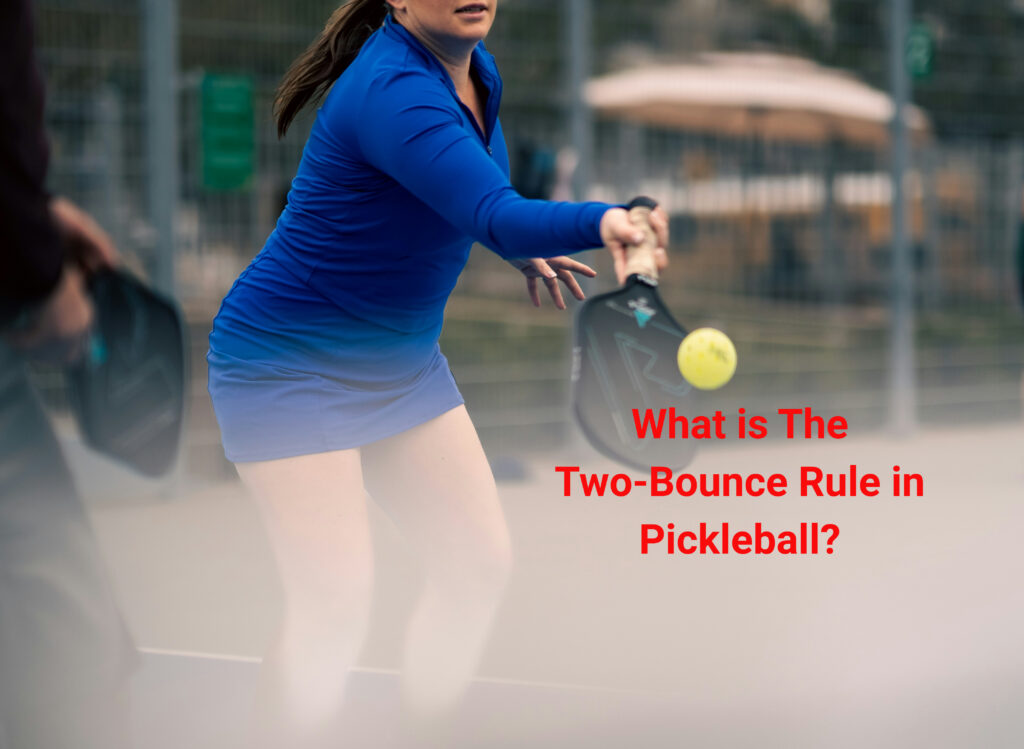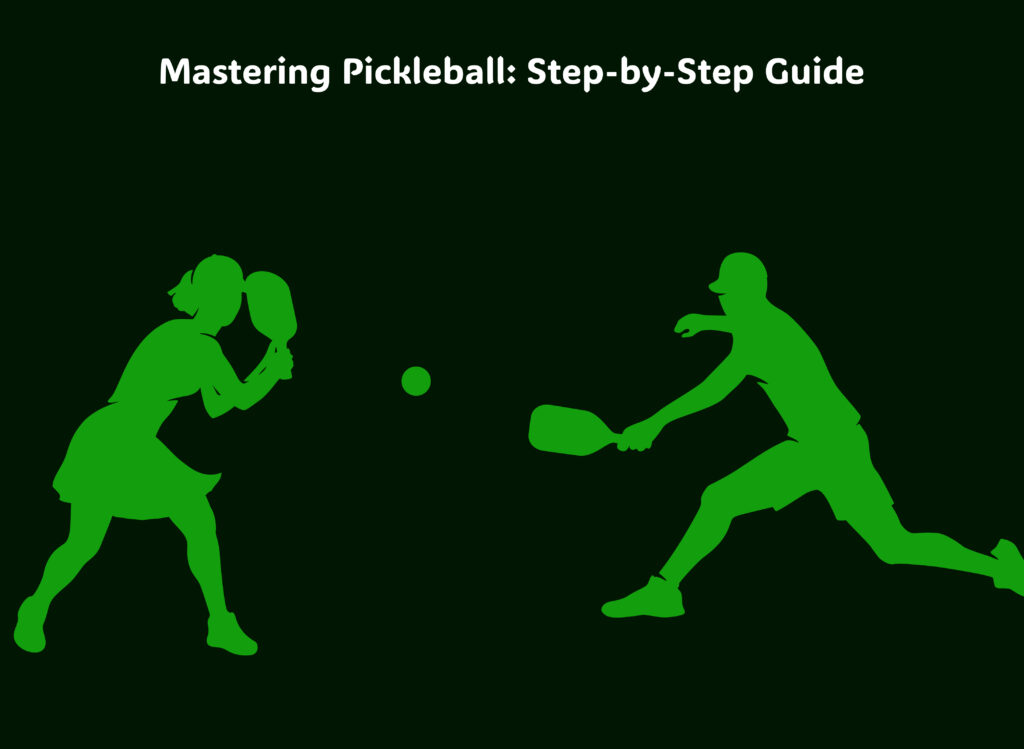- 1️⃣ What is the Two-Bounce Rule in Pickleball?
- 2️⃣ Why Does the Two-Bounce Rule Exist in Pickleball?
- 3️⃣ How the Two-Bounce Rule Affects Game Strategy
- 4️⃣ Common Mistakes Players Make with the Two-Bounce Rule
- 5️⃣ How to Use the Two-Bounce Rule to Your Advantage
- 6️⃣ Final Thoughts: Mastering the Two-Bounce Rule in Pickleball
he Two-Bounce Rule in Pickleball is designed to prevent players from rushing to the net immediately after the serve and to encourage controlled rallies. What is it and why is it important? Known for its unique rules that make it different from tennis, badminton, and table tennis its one of the most important and fundamental rules of the game. The Two-Bounce Rule, which ensures fair play, longer rallies, and strategic shot selection.
Understanding and applying this rule properly will help both beginners and advanced players improve their game, develop patience, and make smarter shot choices.
In this in-depth guide, we will explain what the Two-Bounce Rule is, why it exists, how it impacts the game, and the best strategies to use in different scenarios.
1️⃣ What is the Two-Bounce Rule in Pickleball?
The Two-Bounce Rule (also known as the Double Bounce Rule) states that:
✅ The serve must bounce once before the returner can hit it.
✅ The return must also bounce before the serving team can hit their next shot.
✅ After these two mandatory bounces, the ball can be volleyed (hit in the air) or played off the bounce.
This rule ensures that both teams have an equal opportunity to reach the kitchen line (non-volley zone) without immediately rushing the net and taking control of the rally.
Example of the Two-Bounce Rule in Action:
1️⃣ Player A (server) serves the ball → It must bounce before Player B can return it.
2️⃣ Player B (receiver) returns the ball → The ball must bounce again before Player A (or their partner) can hit it.
3️⃣ From the third shot onward, volleys and groundstrokes are allowed.
🔥 Key takeaway: The Two-Bounce Rule ensures that both teams start on an equal footing, preventing immediate net dominance.
2️⃣ Why Does the Two-Bounce Rule Exist in Pickleball?
The Two-Bounce Rule is one of the fundamental rules that separates pickleball from other racket sports. Unlike tennis, where players can charge the net after a serve and hit volleys instantly, pickleball forces players to engage in a controlled rally before advancing into attacking positions.
Reasons for the Two-Bounce Rule:
✅ Encourages Longer Rallies – Without the rule, many points would end in one or two shots with aggressive volley play.
✅ Levels the Playing Field – Players of all skill levels have time to get into position instead of losing points too quickly.
✅ Prevents Immediate Net Domination – The rule stops the serving team from rushing the kitchen line and putting the returning team at a disadvantage.
✅ Creates a More Strategic Game – Players must think about placement and shot selection rather than just hitting winners from the start.
🔥 Key takeaway: The Two-Bounce Rule keeps the game balanced, promotes fair play, and encourages thoughtful shot-making.
3️⃣ How the Two-Bounce Rule Affects Game Strategy
The Two-Bounce Rule directly impacts how players approach serving, returning, and shot selection. Learning to use this rule to your advantage can help you gain control of the rally early on.
How the Rule Affects Serving Strategy
✅ Deep Serves Are Best – Serving deep to the baseline forces the receiver further back, making it harder for them to attack.
✅ Avoid Soft or Short Serves – A short serve allows the receiver to move in and return aggressively.
✅ Plan for the Third Shot – Since you must let the return bounce, position yourself for a strong third shot drop or drive.
How the Rule Affects Returning Strategy
✅ Aim for a Deep Return – The deeper your return, the harder it is for your opponent to hit an effective third shot.
✅ Move to the Kitchen Line Quickly – Since the serving team must let the ball bounce, returners should rush forward immediately.
✅ Use a Slice or Lofted Return – This gives you extra time to move to the non-volley zone before your opponents can attack.
🔥 Key takeaway: The best players use the Two-Bounce Rule strategically by hitting deep serves and returns to take control of the rally.
4️⃣ Common Mistakes Players Make with the Two-Bounce Rule
Even experienced players sometimes misapply or forget the Two-Bounce Rule, leading to unnecessary faults and lost points. Here are the most common mistakes and how to avoid them.
Common Mistakes When Serving & Returning
❌ Hitting a weak serve – If your serve lands short, the returner can attack quickly and put you on the defensive.
❌ Standing too close to the baseline – If you don’t give yourself enough space, you might step inside the court before the second bounce, causing a fault.
❌ Not moving forward after returning the serve – If you stay back, the serving team can take control of the net first.
Common Mistakes in Rally Play
❌ Volleying too early – Many beginners forget to let the second bounce happen before hitting the third shot.
❌ Failing to anticipate the opponent’s return – If you don’t prepare for the second bounce, you might react too late to your opponent’s return shot.
🔥 Key takeaway: Mastering the Two-Bounce Rule requires good positioning, patience, and quick movement to set up your next shot.
5️⃣ How to Use the Two-Bounce Rule to Your Advantage
Rather than seeing the Two-Bounce Rule as a restriction, advanced players use it strategically to gain control of the point.
Best Strategies for Using the Rule to Win More Points:
✅ Hit a high-arcing return – A deep return that gives you time to reach the kitchen can put your opponent in a defensive position.
✅ Anticipate the third shot – Since the serving team must let the ball bounce, be ready for either a drop shot or a drive.
✅ Take control of the non-volley zone early – The best players move forward quickly after their return to take advantage of the rule.
🔥 Key takeaway: The best players don’t just follow the Two-Bounce Rule—they use it to gain control of the rally.
6️⃣ Final Thoughts: Mastering the Two-Bounce Rule in Pickleball
The Two-Bounce Rule is a fundamental part of pickleball that creates fair and strategic play. Whether you’re a beginner or an advanced player, understanding how to use this rule to your advantage will help you play smarter, stay in control of rallies, and win more points.
Key Takeaways:
✔ The Two-Bounce Rule requires both the serve and return to bounce before volleys are allowed.
✔ The rule prevents early net domination and promotes fair play.
✔ Deep serves and returns help take control of the rally early.
✔ Positioning and movement are key—players who use the rule well set up stronger shots and avoid unforced errors.
👀 Enjoyed this read? Fancy levelling up your game even more? Keep reading Dink Quest for the best pickleball tips, drills, and news in the UK!
🎯 Check out these popular posts next:
📬 Subscribe to the Dink Quest newsletter to Stay in the Loop and be the first to get new blog posts, UK pickleball news, tips, player spotlights and exclusive offers
👉 Click here to subscribe now
Get discounts and exclusive offers for Paddles, clothing and accessories from our shop
We’ve got plenty more where that came from! Whether you’re working on your third shot drop, curious about dinking strategies, or just figuring out how to hold your paddle without it flying across the court we’ve got you covered.
👉 Keep reading, keep learning, and keep dinking smart. Let’s grow the game together, one dink at a time. 💚
See you on the court!
The Dinkquest Team UK 🏓



